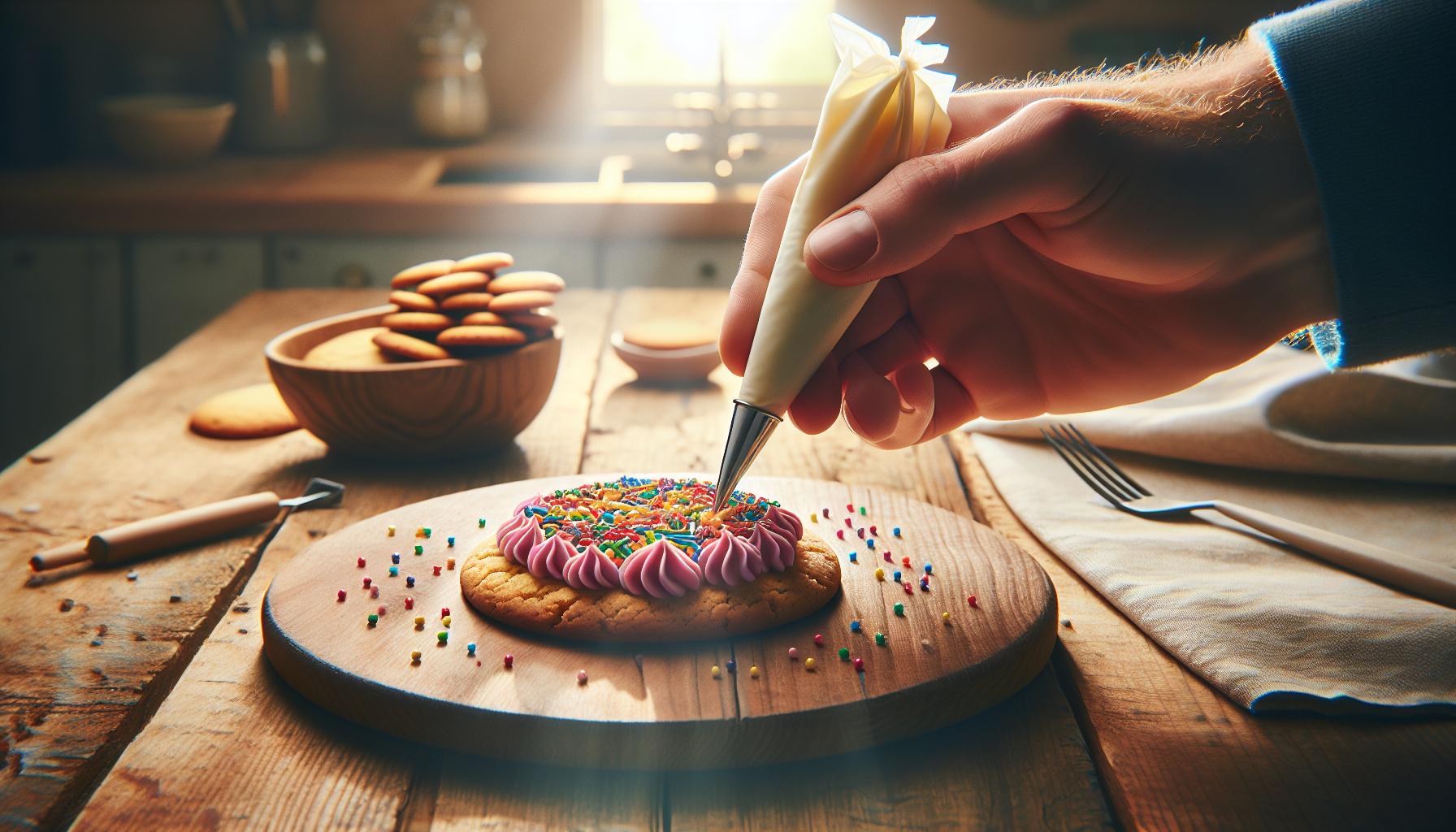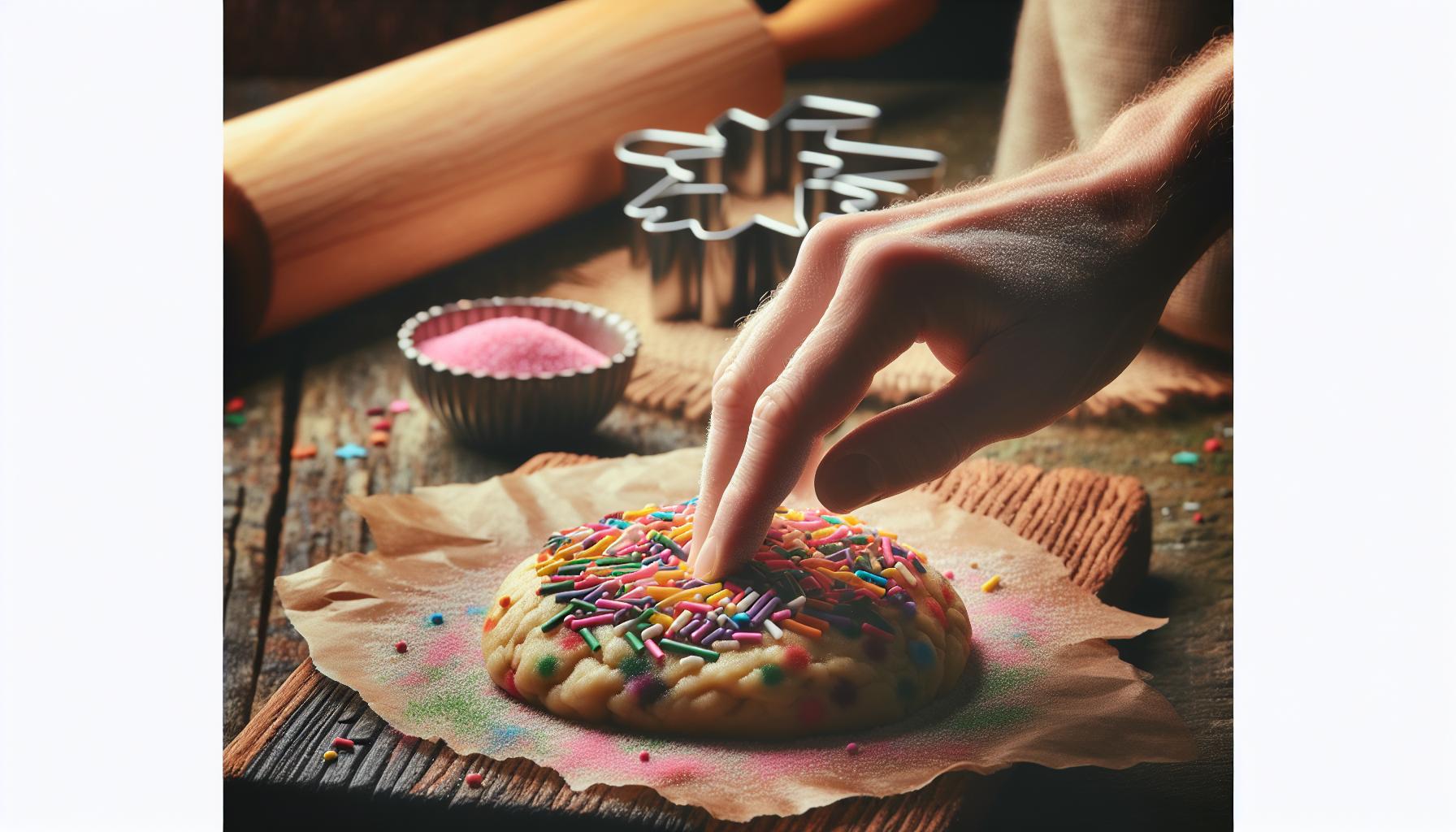The great sprinkle debate has divided bakers for generations: should those colorful little sugar crystals go on before or after baking? It’s a question that can make or break your Instagram-worthy cookie creation and spark heated discussions in kitchen corners everywhere.
Do You Put Sprinkles on Cookies Before Baking? For anyone who’s ever watched their perfectly placed sprinkles slide right off during baking or ended up with a mess of melted rainbow colors they’ll regret these tips are essential. Whether you’re a seasoned baker or just someone trying to avoid a sprinkle catastrophe knowing the right timing can transform your cookies from Pinterest fail to picture perfect. Let’s dive into the sweet science of sprinkle application and unlock the secrets to creating those eye-catching cookies that’ll make everyone ask for your recipe.
Do You Put Sprinkles on Cookies Before Baking
The optimal timing for adding sprinkles depends on the type of cookie base and desired outcome. Adding sprinkles before baking works best for sugar cookies, shortbread cookies or other firm dough varieties. Rolling the cookie dough in sprinkles before baking creates an evenly distributed, embedded appearance.
Soft cookie doughs like chocolate chip or oatmeal accommodate sprinkles best during three key stages:
- Before baking: Press sprinkles into the raw dough balls
- Mid-bake: Add sprinkles at the 5-minute mark when cookies start spreading
- After baking: Sprinkle immediately while cookies remain hot
Nonpareil sprinkles (tiny round balls) stick most effectively when pressed into unbaked dough. Jimmies (rod-shaped sprinkles) maintain their shape better when added during the final 2-3 minutes of baking. Sanding sugar sparkles optimally when sprinkled on hot cookies right after removing them from the oven.
Here’s a timing guide for popular cookie types:
| Cookie Type | Best Time to Add Sprinkles | Why It Works |
|---|---|---|
| Sugar Cookies | Before baking | Sprinkles embed into firm dough |
| Drop Cookies | Mid-bake | Allows proper spreading |
| Chocolate Chip | After baking | Prevents melting |
| Shortbread | Before baking | Creates textured crust |
Temperature plays a crucial role in sprinkle adhesion. Cold dough helps sprinkles stick before baking while warm cookies (180°F-190°F) create the perfect surface for post-bake decoration. Pressing sprinkles gently into the surface improves their staying power regardless of application timing.
Adding Sprinkles Before Baking

Adding sprinkles before baking creates a secure bond between the decorations and cookie dough, resulting in an integrated appearance. The success depends on selecting appropriate sprinkle types and applying them correctly to achieve professional-looking results.
Types of Sprinkles That Work Best
Nonpareils (tiny round sprinkles) maintain their shape during baking and adhere effectively to cookie dough. Traditional jimmies (rod-shaped sprinkles) offer excellent heat resistance and stay vibrant through the baking process. Sanding sugar provides a sparkly finish and melts slightly to create a crystallized surface. Quins (flat confetti-style sprinkles) work best on thick cookie dough as they remain stable at high temperatures.
| Sprinkle Type | Heat Resistance | Visual Effect |
|---|---|---|
| Nonpareils | High | Dotted |
| Jimmies | High | Linear |
| Sanding Sugar | Medium | Crystallized |
| Quins | High | Flat patterns |
Proper Application Techniques
Press sprinkles gently into the cookie dough surface using the palm of your hand for even distribution. Roll cookie dough balls in a shallow dish of sprinkles for complete coverage. Dip the top of each dough ball into sprinkles before placing on the baking sheet. Chill decorated cookies for 15 minutes before baking to prevent sprinkle movement. Space cookies 2 inches apart on the baking sheet to maintain sprinkle placement during spread.
| Application Method | Coverage Level | Best For |
|---|---|---|
| Palm Press | Light | Cut-outs |
| Roll Method | Full | Drop cookies |
| Top Dip | Partial | Round cookies |
Adding Sprinkles After Baking

Applying sprinkles post-baking creates decorative patterns on cookies using adhesive elements like royal icing or melted chocolate. This method offers precise control over sprinkle placement while maintaining the sprinkles’ vibrant colors.
Working With Royal Icing
Royal icing serves as an effective adhesive for sprinkles on cooled cookies. Professional bakers pipe royal icing onto cookies in specific patterns or flood entire surfaces before adding sprinkles. The icing requires 20 minutes at room temperature to develop a slight crust, creating an optimal surface for sprinkle application. Nonpareils, jimmies, dragées stick securely to royal icing once it sets. Bakers apply sprinkles using a shaker, tweezers or gentle hand-sprinkling techniques to achieve uniform coverage.
Using Melted Chocolate
Melted chocolate creates a smooth surface for sprinkle application at 90°F (32°C). Dark, milk or white chocolate varieties adhere sprinkles effectively when tempered correctly. Bakers dip cooled cookies partially in melted chocolate or pipe designs before adding decorations. The chocolate sets firm in 10 minutes at room temperature, securing the sprinkles in place. Common techniques include edge-dipping, drizzling patterns or spreading a thin layer across the cookie surface. Quins, sugar crystals, metallic dragées pair particularly well with chocolate-coated cookies.
Common Sprinkle Problems and Solutions

Sprinkle application challenges often arise during cookie decorating, affecting both visual appeal and texture. Here are targeted solutions for the most frequent issues bakers encounter.
Preventing Colors From Bleeding
Color bleeding occurs when sprinkle dyes transfer into cookie dough or icing during baking or storage. Non-wax based sprinkles with natural coloring agents minimize bleeding risk. Storing cookies in single layers with parchment paper between them prevents color transfer. Application timing plays a crucial role—adding sprinkles to completely cooled icing reduces dye migration. Quality sprinkles from established manufacturers maintain their color integrity better than generic brands. Testing sprinkles on a small batch identifies potential bleeding issues before decorating an entire batch.
Fixing Sprinkle Adhesion Issues
Proper adhesion requires the right surface texture and temperature conditions. Lightly pressing sprinkles into raw cookie dough creates a secure bond during baking. Rolling dough balls in egg wash before applying sprinkles increases adherence. For post-bake decoration, royal icing becomes tacky after 2-3 minutes—the optimal window for sprinkle application. Melted chocolate maintains sprinkle grip when applied at 90°F. A light mist of water on cooled cookies provides temporary surface tension for sprinkle attachment. Professional bakers use piping gel as a clear adhesive for precise decorative patterns.
Best Cookie Types for Sprinkles
Sugar cookies excel at holding sprinkles with their firm, smooth surface. Their dense dough composition creates an ideal canvas for both pre-bake and post-bake sprinkle application.
Shortbread cookies provide excellent sprinkle adhesion due to their buttery texture. Rolling shortbread dough balls in sprinkles before baking yields uniform coverage.
Drop cookies, like chocolate chip varieties, offer versatile sprinkle opportunities at multiple stages:
- Pre-bake: Press sprinkles into the dough balls
- Mid-bake: Add sprinkles at the 5-minute mark
- Post-bake: Apply while cookies are warm
Cut-out cookies work particularly well with royal icing and sprinkle combinations. These cookies maintain their shape during baking, creating precise surfaces for decorative patterns.
Here’s a comparison of popular cookie types and their sprinkle compatibility:
| Cookie Type | Pre-Bake Adhesion | Post-Bake Adhesion | Best Sprinkle Types |
|---|---|---|---|
| Sugar | Excellent | Excellent | All varieties |
| Shortbread | Very Good | Good | Nonpareils, jimmies |
| Drop | Good | Very Good | Jimmies, quins |
| Cut-out | Good | Excellent | Sanding sugar, nonpareils |
Butter cookies accept sprinkles effectively thanks to their rich fat content. Sprinkles adhere best when pressed into the dough before baking.
Snickerdoodles incorporate sprinkles seamlessly among their signature cinnamon sugar coating. Adding colorful sprinkles creates an eye-catching contrast against the traditional topping.
Thumbprint cookies feature natural indentations perfect for sprinkle placement. The depression in these cookies holds sprinkles securely during baking.
When to Add
Do You Put Sprinkles on Cookies Before Baking? Adding sprinkles to cookies is both an art and a science that depends on various factors including cookie type dough consistency and desired appearance. Whether bakers choose to apply sprinkles before during or after baking each method offers unique advantages for creating eye-catching treats.
The key to success lies in understanding timing temperature and proper application techniques. With the right approach bakers can achieve professional-looking results that not only taste great but also provide that perfect Instagram-worthy appearance.
By following these tested methods and considering the specific requirements of different cookie types anyone can master the art of sprinkle decoration and create beautiful batches of cookies every time.

